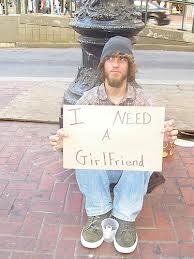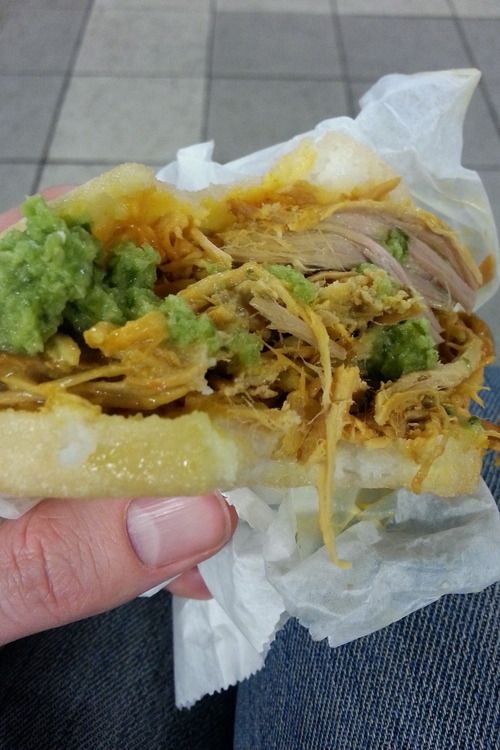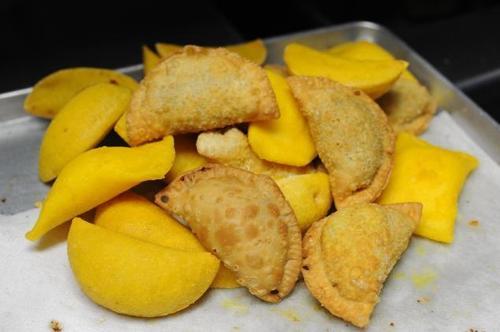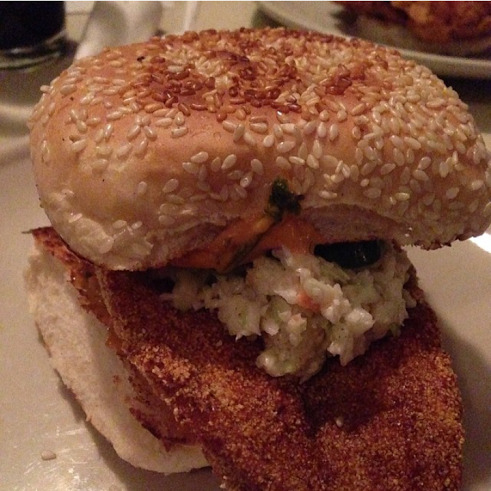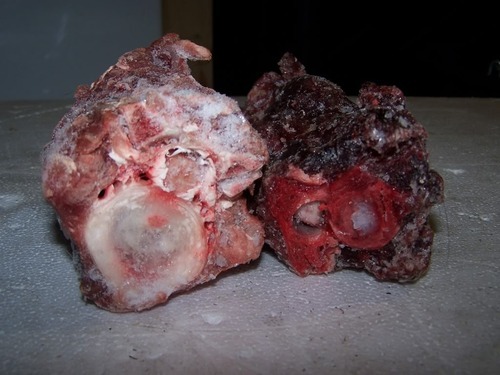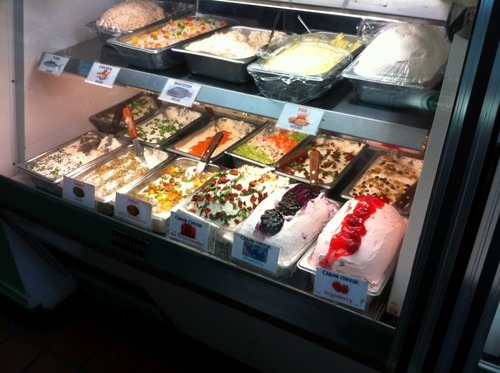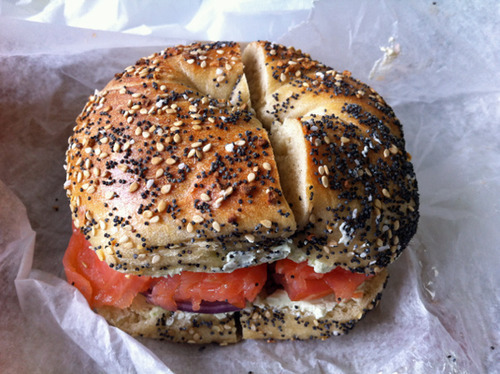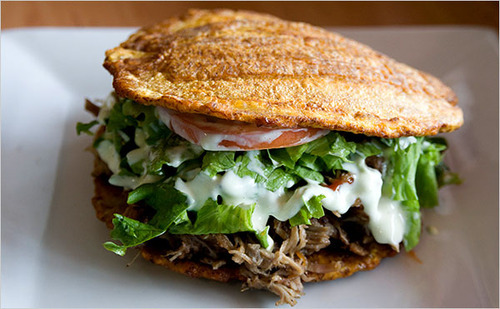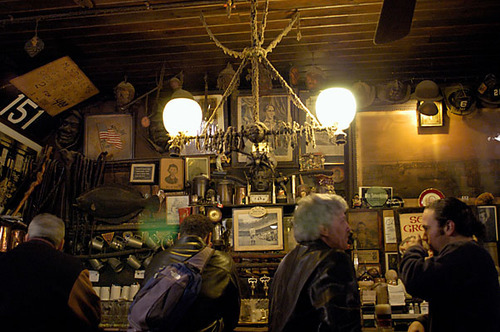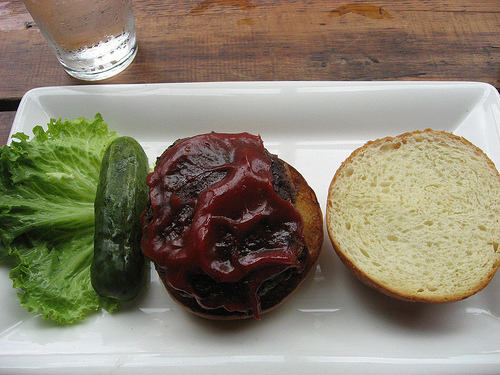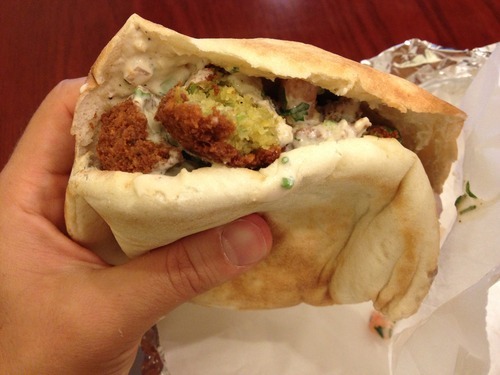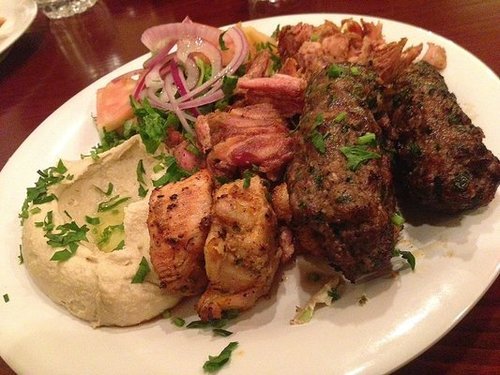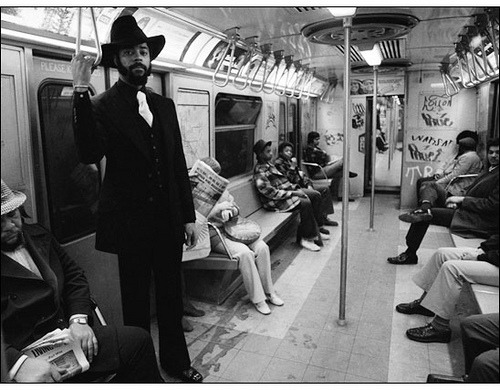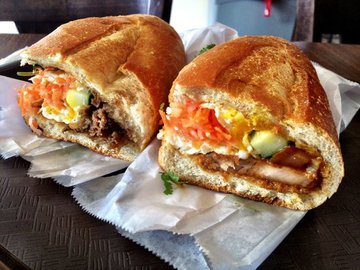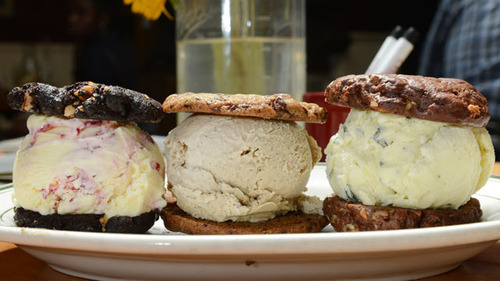The New York Sandwich Project: Week 9
Chinatown is not a region unique to Manhattan; most major cities have a Chinatown, because the Chinese utterly dominate the gene pool and love to travel. In fact, the city of New York contains eight separate Chinatowns spread throughout the five burrows (except for Staten Island, for obvious reasons). But there is something unique to Manhattan’s Chinatown. The name evokes an image, a departure from everything you know to be “Manhattan,” something quintessentially New York and authentically Chinese.
Walk down the street, you will find kittens slinking around the sidewalks, hunting their pigeon prey as their owners look on with stoic faces. Stop by one of the hole-in-the-wall restaurants: four bucks will get you and your girlfriend so many shrimp pork dumplings, you’ll be too bloated to move. Hop aboard the legendary Fung Wah bus, which despite its violations of numerous safety and ethical codes, will take you anywhere in the nation for six dollars and thirty cents.
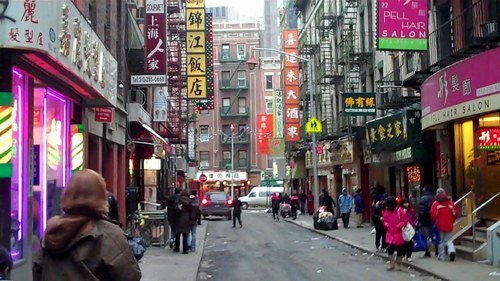
More so than any other borough of the city, Chinatown feels as though you’re stepping into a foreign land (you know, like China). The origin of the Chinese presence in this region started with one man: Ah Ken. He arrived in the 1850’s, with the dream of slanging ‘awful’ discount cigars for three cents a pop. Through this hyper-cheap cigar hustle, he built up a considerable wealth, paving the way for other Chinese to follow in his footsteps. Now nearly one hundred thousand Chinese-blooded men and women live in this Manhattan neighborhood, standing as the largest collection of Chinese people in the Western world. And they keep it authentic, baby. Often, you will feel illiterate walking the streets, wondering what lays shrouded in the mystery of the Chinese character. Is it a squid shop or an underground gambling casino? You’ll never know ‘til you go inside.
The reason Chinatown is so fresh in my head is because I recently ventured into this district for what is known as a reflexology treatment. Given some bizarre symptoms that shall remain nameless, I found Western medicine at a loss to assist me. Therefore, I was forced to abandon my roots and explore Eastern medicinal solutions. A colleague recommended reflexology treatment to me one night, my interest was peaked, and after work, as the sun began to set off in the distance, I entered a small shop on the edge of Chinatown.
A gruff man waiting behind the counter greeted me with a grunt and led me into a room adorned with traditional art and underscored by relaxation music. I told him my symptoms and he pointed to a chair, where I was instructed to sit, with little else. He yelled into the back room. A small, middle-aged woman appeared, carrying a massive bowl of piping hot water. She motioned for me to remove my shoes, so I did just that. Then she reclined the chair and began scrubbing my feet.
“Oh,” I said to myself. “It’s a foot massage.”
But I was wrong. So very, very wrong. What ensued for the following thirty minutes was a savage beating of my hairy Irish feet. She ripped on my toes, bent and twisted my bones, and dug her fingers into my ankle while she gouged my sole (soul?). The experience was a bizarre and painful ride, where I bit my lower lip to keep the screams from pouring out. It was not until the end that I began to comprehend what was happening.
Chinese medicine is done with a holistic healing procedure in mind, as opposed to Western, which targets the ailment of affliction. Chinese reflexologists believe the feet (along with the hands and ears), is a gateway to the body, a place where all organs and muscles are somehow connected through referential points. In short, if you hit the right part of the foot, it’s gonna do something to your spleen.

Does it sound profound or like a bunch of voodoo, hocus-pocus? I’m still not sure. That night, I left that shop with a profound feeling of peace, a calmness that my body had not felt in some time. What I am sure of is that bodily tightness and stress do not help anything, ever, and the treatment I received liberated me from both of these things. And if it did more, I am nothing but grateful. Twenty-five bucks if you’re ever interested. Lorenzo can give you directions. To both this place, and our sandwich of the week.
Sandwich 9: Defonte’s of Brooklyn
I originally planned to attend a Chinese sandwich shop for this week’s entry. Then I went to Defonte’s of Brooklyn and entered Nirvana and gave up all regard to coming up with a coherent blog theme. Defonte’s of Brooklyn is an Italian sandwich shop that epitomizes the essence of sandwich.
Last week I discussed in depth the virtue of “moistness” in a sandwich. If Defonte’s represented a virtue in the sandwich world, it would be “fatness.” Sometimes, you’re not looking for innovation; you don’t want plantains for bread or kimchi atop your bulgogi burger. Sometimes, you just want the fattest Italian hero money can buy. Whether you call it call it a grinder or a hoagie or a sub, anyway you slice it, Defonte’s is a certifiably fat sandwich.
This deli has been lurking around since 1922, which means it came out around in an age where alcohol was outlawed for its danger to society. How far we’ve come. Since then, Defonte’s street cred has grown immensely, with credits including mention in the New York Times and a cameo on Food Network’s “Diners, Drive-ins, and Dives.” They are not innovators at Defonte’s, their secret to success boils down to properly executing the three F’s:
1.) Freshness
2.) Flavor
3.) Fatness.
My sandwich of choice is served cold, the infamous Nicky Special. Its description off the menu reads:
“ham, capocollo, salami, fried eggplant, provolone, hot salad, marinated mushrooms, lettuce, tomato, oil and vinegar.”
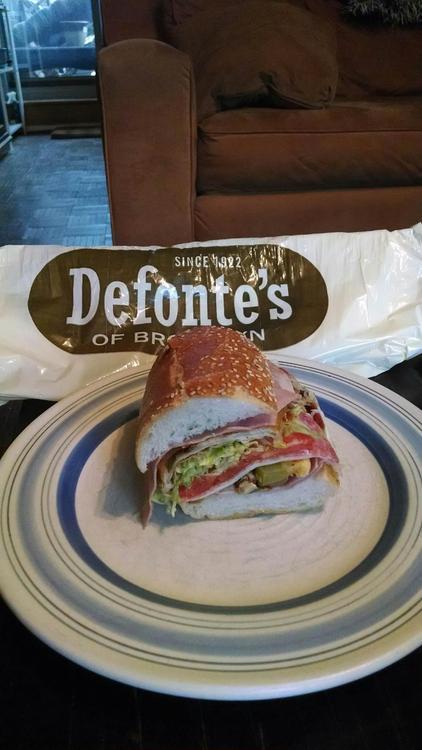
Tell me that doesn’t scream “fatness?” The holy trinity of Italian grinder meats, layered with provolone, vegetables, and oils is nothing mind-blowing, but it is a tried-and-true classic, so why mess with a good thing? The freshness of each of these ingredients is paramount to this hoagie’s flavor. What takes it to the next level is the addition of flawlessly fried eggplant, which offers a plethora of thick and savory flavor, balanced by the “hot salad,” a collection of spicy, pickled peppers, and the juicy marinated mushrooms.
One of these subs is not too fat to eat. One is just fat enough to eat. No one walks away from a Nicky’s Special hungry, not unless that individual is a problem eater or is afflicted with the world’s mightiest tapeworm. With its original location in Brooklyn, new location in Gramercy, and over eighty years of history, there’s no reason why you shouldn’t already have eaten here twice this week.
